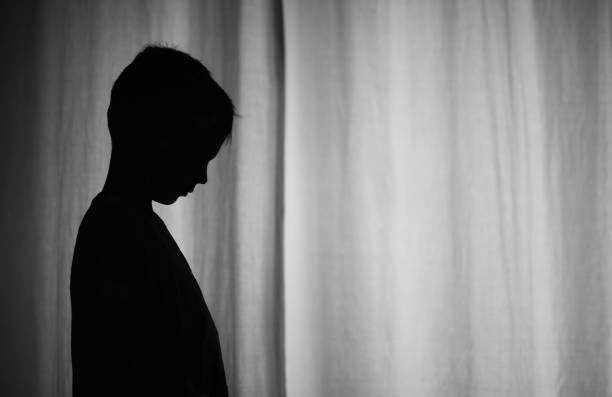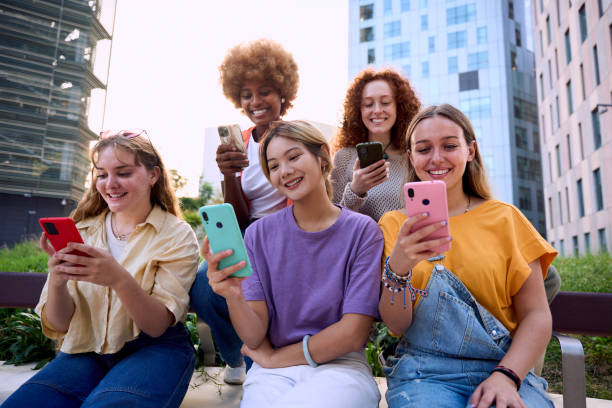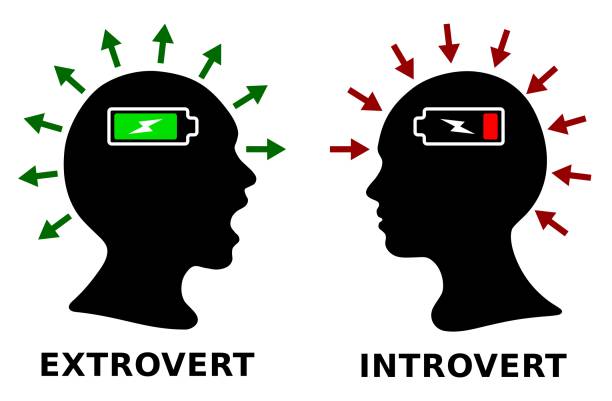It happens in less than a second. A glance. A handshake. A nod. No words yet. No explanations. But somewhere deep inside your brain, a judgment is already forming. Is this person trustworthy? Friendly? Confident? Attractive? Safe?
In a flash, without conscious effort, you’ve made up your mind. And whether you realize it or not, so have they.
First impressions are among the most powerful—and often misunderstood—psychological forces in human interaction. They are not just social niceties. They are neurological survival mechanisms, sculpted by evolution and wired into our brains. In many ways, they shape the trajectory of relationships, careers, and even entire lives.
But what exactly happens when two strangers meet? What does science say people are really seeing? The answers are stranger, deeper, and far more telling than we often realize.
Hardwired for Snap Judgments
Long before modern society—with its resumes, social media profiles, and elaborate rituals—humans needed a way to assess each other quickly. On the African savannah, deciding whether a stranger was a friend or threat was often a matter of life and death. Evolution rewarded those who could read others swiftly and act accordingly.
That legacy lives on in your brain’s architecture. Within milliseconds of seeing someone, the amygdala—a small, almond-shaped structure involved in emotional processing—lights up. It starts analyzing facial features, body language, posture, and even microexpressions, scanning for signals of threat or safety.
Simultaneously, your brain’s fusiform gyrus processes faces with incredible efficiency. Humans are wired to detect and remember faces. In fact, we’re better at recognizing human faces than any other visual object. This specialization lets us detect subtle cues like a twitch of the eye or the curl of a lip that might reveal someone’s mood, motives, or honesty.
From the very first moment, your brain isn’t seeing just a face. It’s decoding signals, assessing status, guessing intentions, and deciding how to respond. And it does all this in the blink of an eye—often without your conscious awareness.
What People Notice First—And Why
So what is it that people actually notice when they meet someone for the first time?
Science suggests that two key questions dominate our unconscious judgment process:
Can I trust this person?
Can I respect this person?
Harvard psychologist Amy Cuddy, known for her work on first impressions and presence, found that warmth and competence are the two primary dimensions we judge others on. Warmth relates to trustworthiness, friendliness, and kindness. Competence relates to capability, intelligence, and skill.
Interestingly, while we might believe that demonstrating our intelligence or abilities is most important—especially in professional settings—people are first looking for warmth. Trust is the gatekeeper. If someone seems cold or arrogant, even if they are highly competent, they may be perceived as threatening. Warmth opens the door. Competence earns the seat at the table.
In a matter of seconds, people gather subtle cues: the tone of your voice, the firmness of your handshake, your facial expression, eye contact, posture, even the rhythm of your speech. These elements combine to create a powerful, often unconscious impression of who you are.
The Power of the Face
Among all the features we use to assess others, the human face reigns supreme. It’s our primary interface—the billboard of the brain.
Research has shown that people make judgments about trustworthiness, dominance, and likability based on faces alone—and often in less than 100 milliseconds. In one striking experiment, participants were shown photos of politicians for just one second and asked to rate their competence. Astonishingly, these ratings predicted real-world election outcomes with surprising accuracy.
But what facial features influence perception?
Faces with larger eyes, rounder cheeks, and upturned mouths tend to be perceived as more trustworthy and warm—traits often associated with “babyface” features. Sharper features, such as a strong jawline or deep-set eyes, may signal strength and dominance but can also be perceived as intimidating or unapproachable.
Even facial symmetry plays a role. Humans are drawn to symmetry, possibly because it subconsciously signals health and genetic fitness. While perfect symmetry is rare, faces that are relatively balanced tend to be rated as more attractive and trustworthy.
Expression is another key factor. A genuine smile—one that involves the eyes, known as the Duchenne smile—is a universal signal of friendliness and goodwill. Fake smiles can be detected in milliseconds, triggering a feeling of unease or skepticism.
Body Language: The Unspoken Impression
While the face captures attention, the body tells the story.
Your posture, gestures, and movement patterns speak volumes before you utter a single word. According to nonverbal communication experts, more than half of all communication is nonverbal—and much of that is processed unconsciously.
An open posture—chest up, arms relaxed, facing forward—signals confidence and receptivity. In contrast, crossed arms, hunched shoulders, or turned-away feet can suggest discomfort, defensiveness, or disinterest. Eye contact that is steady but not intense fosters connection. Too little, and you appear evasive. Too much, and it feels aggressive.
Mirroring—subtly copying another person’s posture or gestures—also plays a role in building rapport. When people feel in sync, their bodies naturally align. This physical resonance can create a powerful feeling of trust and familiarity.
And then there’s motion. People who move with calm, purposeful energy tend to be seen as more composed and capable. Jerky or fidgety movements may be read as nervousness or lack of confidence.
Your body is constantly broadcasting who you are—whether you intend it or not.
Clothing, Voice, and Context
First impressions are shaped not only by biology but also by culture, context, and expectation.
Clothing is one of the most immediate visual cues we use to assess others. It conveys social status, profession, personality, and even emotional state. People dressed in formal or tailored clothing are often rated as more competent, while casual or disheveled attire may be associated with carelessness or rebellion—depending on the setting.
But clothing can also convey authenticity. Someone dressed in a way that reflects their true personality—whether quirky, minimalistic, or vintage—can come across as confident and self-assured.
Voice is another crucial layer. The sound of a person’s voice—its pitch, tone, speed, and inflection—has a profound impact on how they are perceived. A deep, steady voice can convey authority. A warm, varied tone suggests friendliness. Even a simple “Hello” can trigger subconscious evaluations of charisma and trust.
Context matters too. Meeting someone at a job interview triggers different brain filters than meeting them at a party or on a date. The same person may be judged differently depending on social norms, cultural expectations, and shared experiences.
Biases and the Brain: When First Impressions Go Wrong
Despite their evolutionary roots, first impressions are not always accurate. In fact, they are deeply vulnerable to bias—racial, gender, cultural, and cognitive. What feels like intuition may often be stereotype.
Research shows that unconscious bias can influence how we perceive others’ competence, warmth, or danger. For example, studies have shown that identical resumes with different names—one typically white-sounding, the other Black-sounding—receive dramatically different evaluations from employers. These biases, often implicit, are baked into the first impressions we form.
Cultural differences also play a role. In some cultures, avoiding eye contact is a sign of respect. In others, it may be seen as evasive. Without cultural context, people can misread body language, tone, or expressions, leading to misunderstanding or misjudgment.
The good news? First impressions can be unlearned and revised. Awareness is key. When we recognize our biases, we gain the power to pause, reflect, and see beyond the snap judgment.
How to Make a Better First Impression—Scientifically Speaking
You can’t stop others from forming first impressions of you, but you can shape the impression you leave.
Science suggests a few ways to do this authentically:
Be present. Mindfulness is your greatest ally. When you’re fully engaged—listening, observing, responding with genuine interest—you create a powerful emotional presence.
Use warmth before competence. Smile. Make eye contact. Show that you care. Trust builds faster than admiration.
Speak clearly and with intention. Don’t rush. Pauses can signal thoughtfulness. A calm, steady tone speaks volumes.
Let your body match your message. Align your posture, gestures, and expressions. People intuitively sense incongruence.
Dress with awareness. Choose clothes that feel like “you,” but also reflect the expectations of the environment you’re in.
But perhaps the most powerful tip of all: see the other person first. When people feel seen and valued, they are far more likely to view you in the same light. Connection breeds connection.
The Memory of a Moment
First impressions don’t just vanish after the first meeting. They linger in the mind, coloring future interactions. In psychology, this is called the primacy effect—the tendency to remember and give more weight to the first information we receive about someone.
This is why a clumsy first encounter can be so hard to overcome. But it also means that a warm, positive beginning can give you grace and trust that lasts.
Of course, impressions can change over time. With more data and deeper experience, our judgments shift. But the human brain, ever efficient, prefers consistency. Changing someone’s first impression takes effort—not just on their part, but on ours as well.
It’s worth the effort. Because when we take the time to see beyond the surface, we open the door to deeper relationships, unexpected alliances, and more compassionate worlds.
Why First Impressions Matter—Even When They Shouldn’t
Some may argue that we shouldn’t judge a book by its cover. And while that’s a noble ideal, science shows that our brains are built to do exactly that. The question isn’t if we make first impressions—but how we manage them.
Understanding the science behind these snap judgments gives us more control over our social world. It allows us to become better communicators, more empathetic listeners, and wiser evaluators. It helps us navigate the messy, beautiful complexity of being human.
And perhaps most importantly, it reminds us that every moment of meeting carries magic. Every handshake, every hello, every glance is a seed of possibility—an invitation to see and be seen.
Because behind every first impression is a full, intricate, beating heart. And the more we understand what people are really seeing, the better we become at seeing each other—clearly, kindly, and completely.






